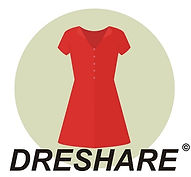Top 10 Hidden Secrets of Fashion Industry you might don't know!
- May 5, 2017
- 5 min read
Hello, myself Rajinder Verma, i am founder of fashion aggregator platform-dreshare.com , while researching fashion industry i came up top 10 hidden secrets of fashion industry.
There are many things in fashion industry you might don't know like global impact of making clothes, or how many employees theft effects them.
1. GLOBAL EFFECTS:
There are several countries all over the world that rely on the fashion industry for exports and their economy.
>> 88% of Haiti's
>> 79% of Bangladesh's
>> 52% of Cambodia's
>> 43% of Sri Lankan's
Exports depends upon the fashion/clothing industry.
Not only that , but the amount of land it takes to graze animal ,grow cotton and the transportation it takes to transport clothes is staggering.
It takes 1,083 gallons of water to support everything needed to make 1 cotton shirt.

The good news is consumers are becoming more aware of their global impact and are moving towards clothes that are more sustainable.
2. OUTLET STORES:
Many People think they are getting a great discount by shopping at outlet stores, but that may not be the case.
Big labels have figured out a way to make less quality products and sell them to the masses through their outlet stores.
90% of the merchandise you see in the outlets are direct from the manufacturer and aren't the same quality as the products in the department stores.
The purses you find at the coach outlets are less sturdy, not the same stitching and are harder leather than the ones at the department stores. If you want a good deal, wait for the sale at the department store, and steer clear of outlet stores.
3. Discarded Clothes:
With the Indians buying 5 times as many clothes as they did 30 year ago, it's not wonder landfills are filling up with discarded clothes.
Indians throw away 10.5 million tons of clothes a year.
Out of this ,Indian's only recycle or donate 15% of their clothes per year, which makes textiles one of the lowest rates of recycling of reusable materials.

While a large portion of donated or recycled clothing does get worn, most of the clothes end up being reformed into things like insulation or carpet padding.
Though there have been strikes at trying to decrease the number of clothes that end up in landfills, convince is still a factory to why people toss out their old fashions.
4.TRENDS COST MORE:
Its probably no surprise that you are paying more to stay trendy. The truth is, manufactures will find ways to cut costs on clothes, and then promote them to consumers as trends.
Since the item is trendy, the consumers will pay more for the item, even if the quality is low.

It is cheaper to dye jeans instead of make them acid washed, and its cheaper to use thinner grade of cotton used to make skinny jeans or jeggings.
Think about that the next time you are shopping the latest trends.
5. SURPRISES IN THE DRESSING ROOMS:
There have been interesting dressing room stories from retail workers throughout the years.
From frisky couples, to children locking themselves in the changing rooms, there is never a shortage of amusement.

But, nothing can really prepare a retail worker for a customer who uses the dressing room as their bathroom.
Surprisingly it happens more often than you would think. There is a good chance that the changing room you are using to try on clothes has been used as a bathroom stall at one time or another.
6. WORKING CONDITIONS:
The world has seemed to turn a blind eye when it comes to working condition of the people who make their clothes.
Large companies target women as employees for their factories in poor countries. The women take the jobs in hopes of having independence with their new income, but usually they never achieve this.

The wages are so low, that women have to work tireless hours, and the conditions are even worse.
There are even cases of unreported sexual harassment and intimidation from male superiors.
Employers also discriminate against pregnant women by not giving them time off for doctor's visits, and many women have had miscarriages at work.
7. BEWARE OF DESIGNER EXCLUSIVES:
Much like outlet stores, people should beware of designer exclusives. Usually when some buys these brands, they are expecting them to be the same quality as the brands sold by the designer in high-end stores.
Having designer exclusives is another way manufacturers trick consumers into buying cheap products for a larger price.

The brand name and recognition from the exclusive gives the illusion of quality, without the actual manufacturing of it.
8. UNWORN CLOTHES:
Have you ever wondered what happens with all the unworn clothing that stores cant sell?
In 2010 retail stores H&M and Wal-mart came into hot water for destroying clothes that they were unable to sell. They soon cleaned up their act and started donating all unworn clothing to charity.

Sadly, this instance is not the only story of a company destroying perfectly fine clothing instead of donating them. It is now the majority standard for retailers to donate unworn clothes to charity or recycle the items.
9. EMPLOYEE THEFT:
From stealing from the registers, to taking items from the store, retailers are hit pretty hard when it comes to employee theft.

Its not just low-level employees that these stores have to worry about. Managers and supervisors have the access to steal from places like wal-mart, target , and K-mart daily, and it can cost them hundreds of thousands of dollars from just one store.
Employee theft is so bad, that loss prevention specialists spend more time watching employees than they do customers.
Most of the time, the thieves don't face jail time, but they do lose their jobs.
10. THE TRUTH ABOUT SALES:
With black Friday being one of the largest shopping events of the year, many people wonder if they are actually saving from these one day sales.

On large sale days, retailers will place a price on items with a "was" price next to it, making it seem as though the customer is getting a good deal.
The problem with this is, most of the retailers are using older prices than they should, in order to make it seem like a great discount.
Another trick retailers use is making consumers think that the sale is only 1 day. Most of the time, items will still be the same price or lower in the days or weeks after the sale.
So, if you are not one for the madness that comes with crazy sales, its best to stay home and away from the crowds!
"Thanks for reading this post! Do share this post if you like it" - Rajinder Verma

























Comments